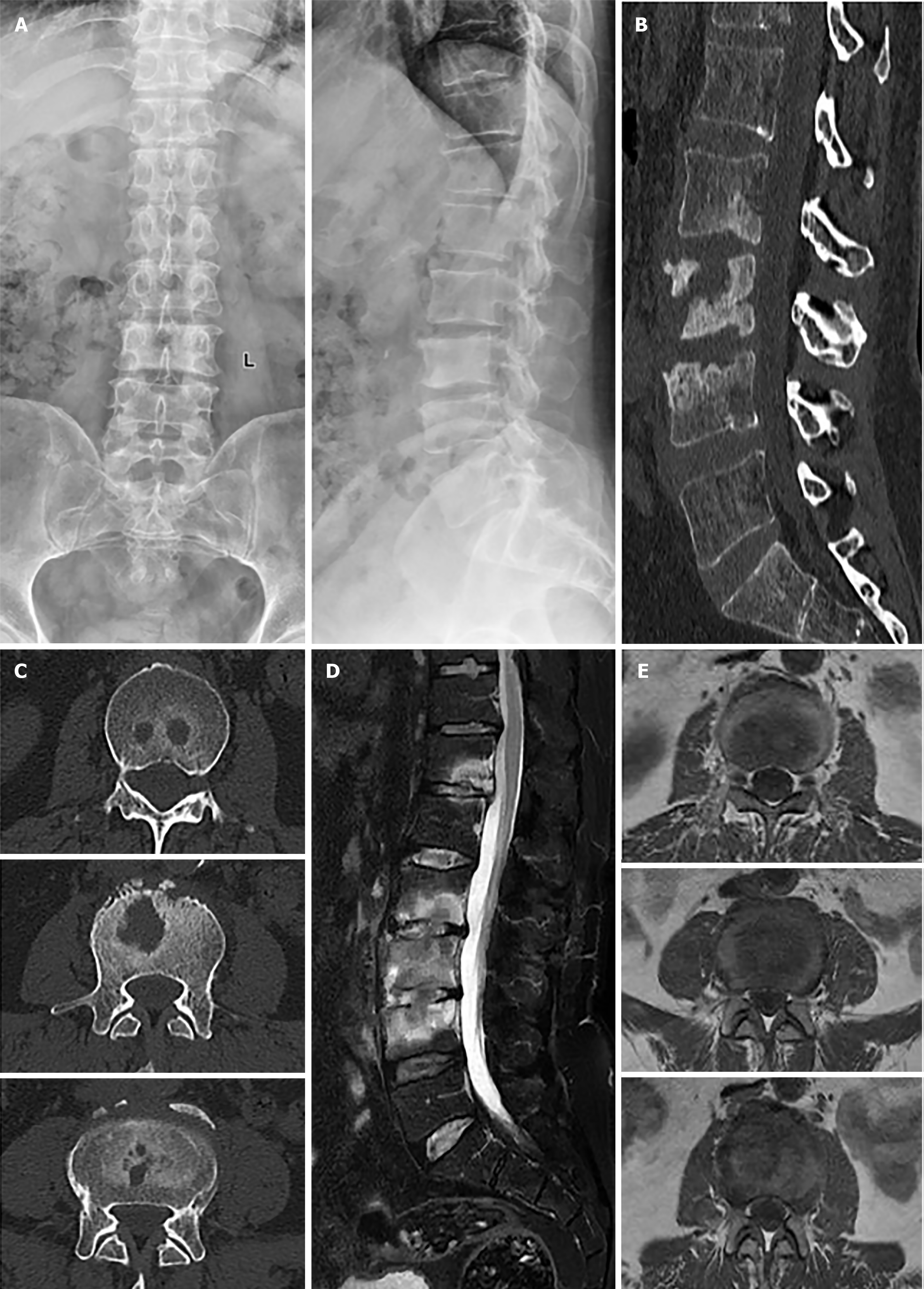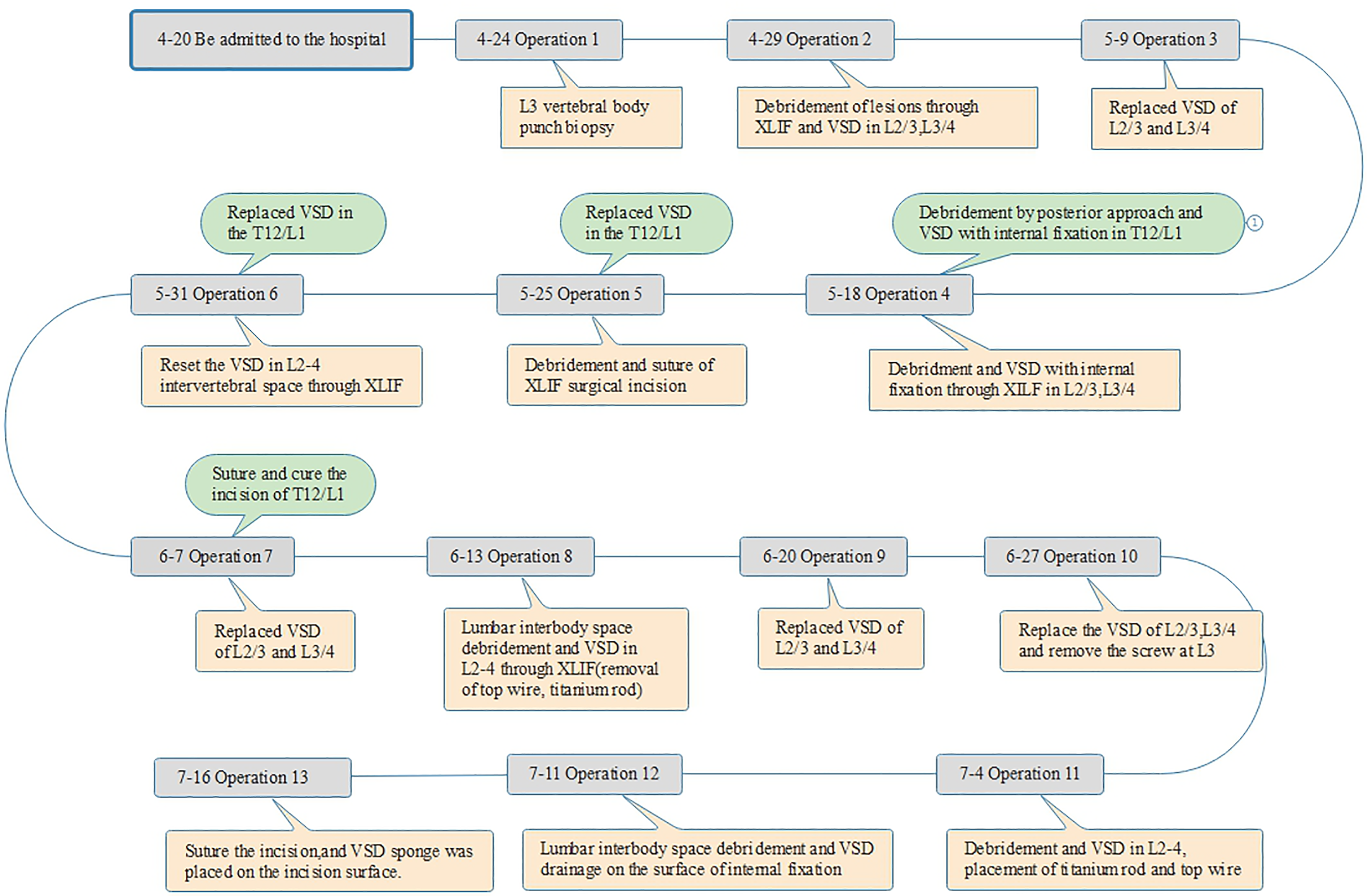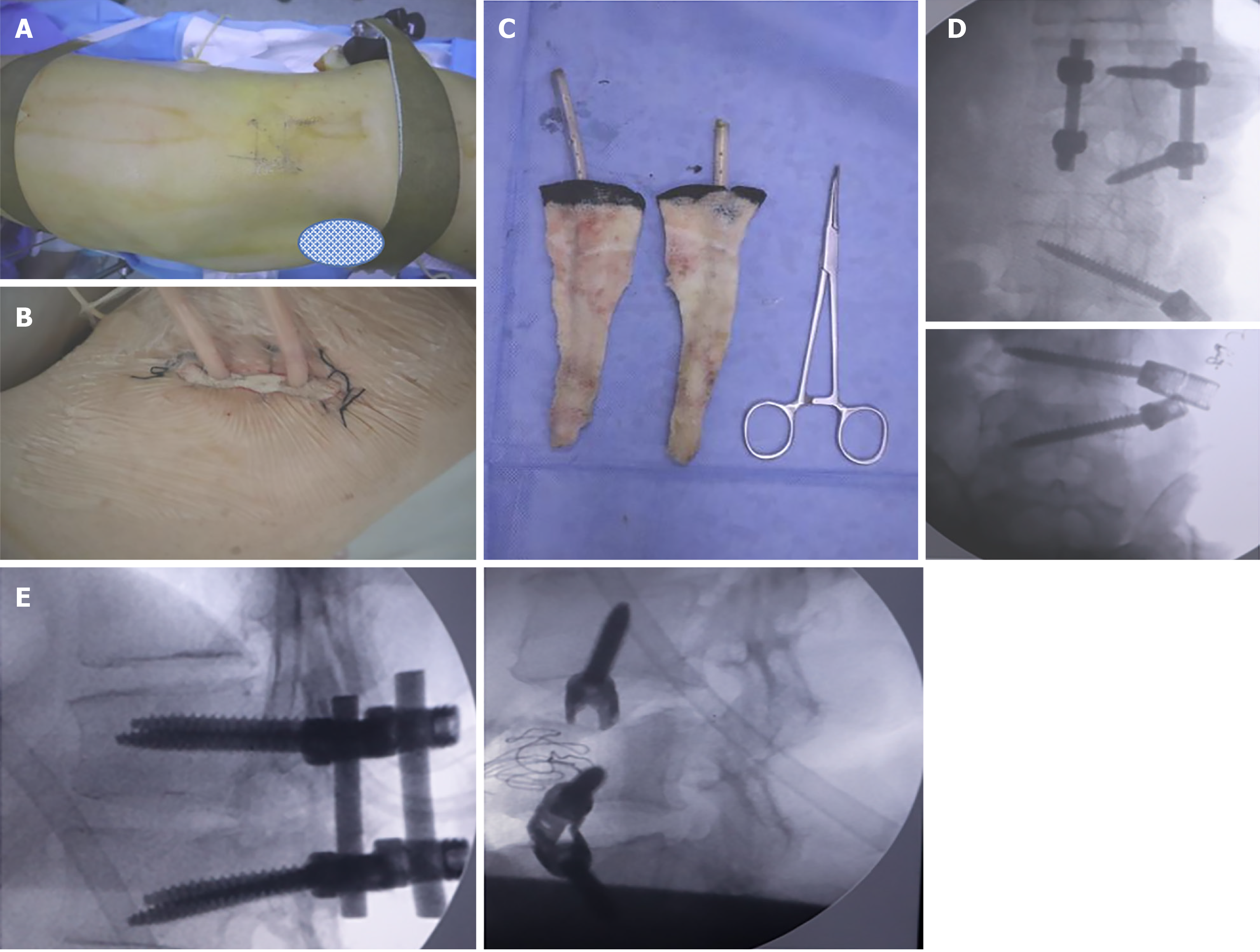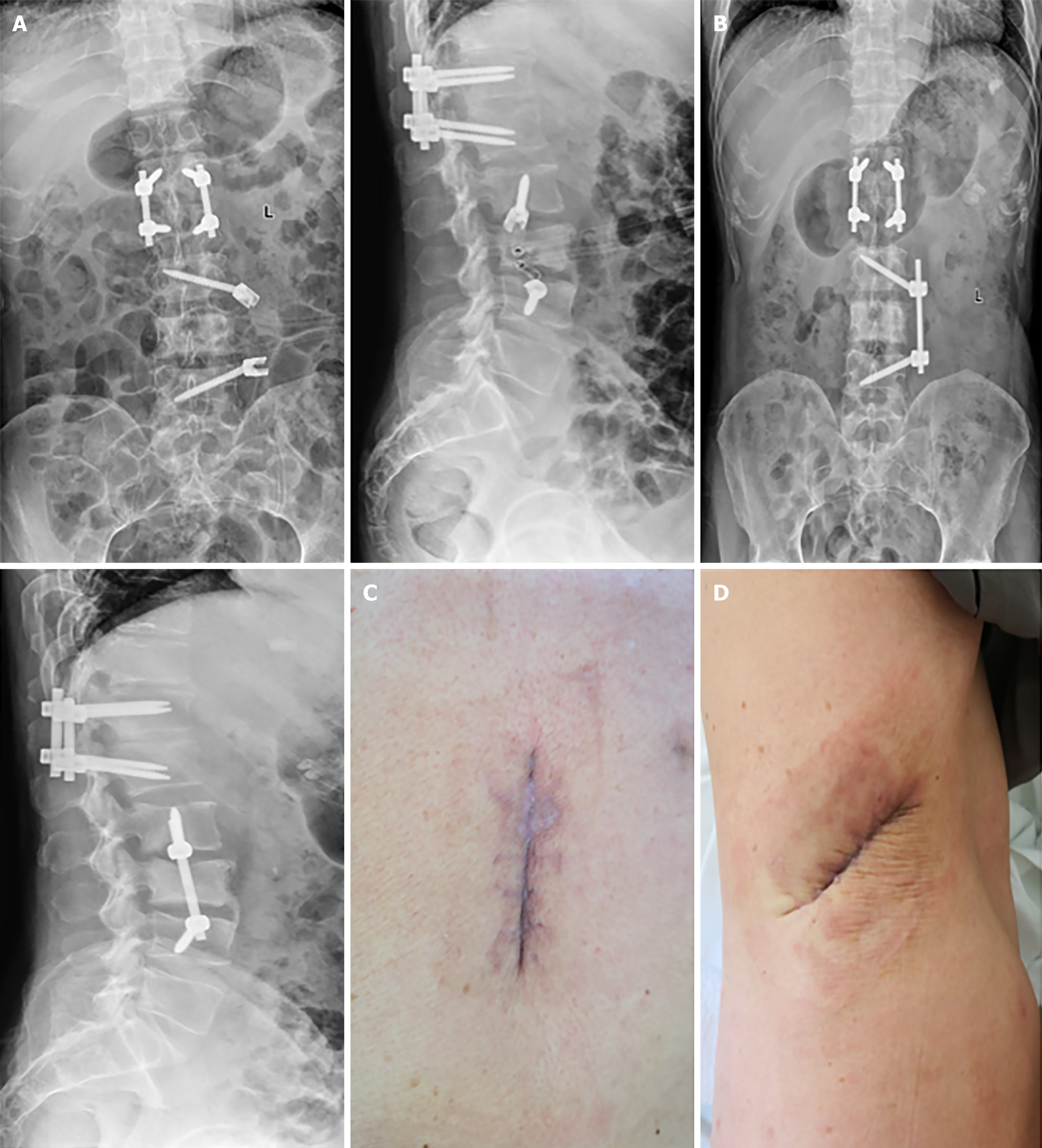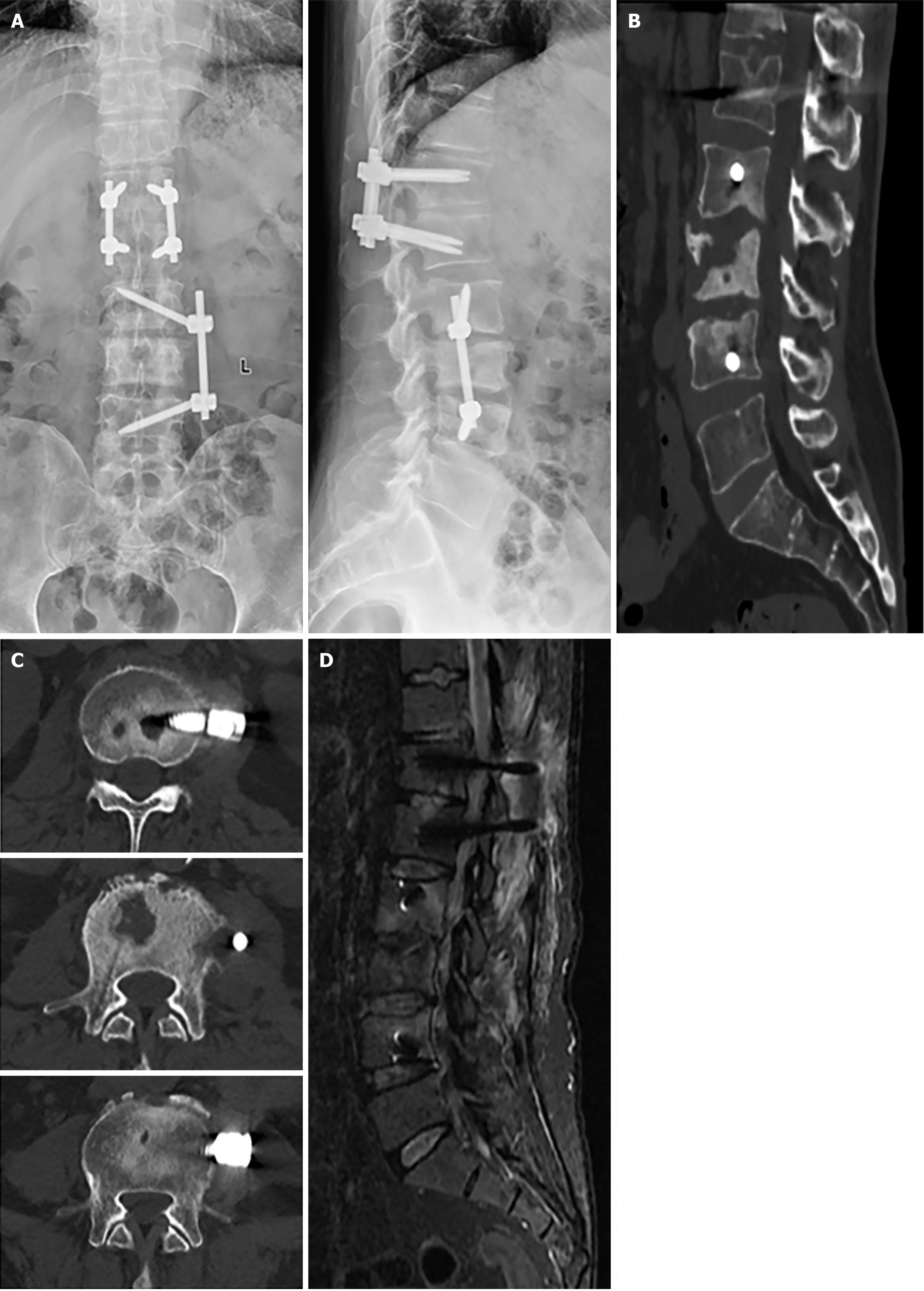Copyright
©The Author(s) 2025.
World J Orthop. Mar 18, 2025; 16(3): 101073
Published online Mar 18, 2025. doi: 10.5312/wjo.v16.i3.101073
Published online Mar 18, 2025. doi: 10.5312/wjo.v16.i3.101073
Figure 1 Imaging examination on admission.
A: Anteroposterior and lateral radiography of the lumbar spine; B: Computed tomography (CT) scan of the lumbar spine; C: Axial CT images of the lumbar spine, demonstrating destruction of the L2-L4 vertebral bodies; D: Lumbar magnetic resonance imaging (MRI) with T2-weighted lipid suppression; E: Axial T2-weighted image MRI showing intervertebral spaces (T12/L1, L2/3, and L3/4) A wide range of high signals is visible in T12/L1, and L2–L4.
Figure 2 Details of the surgical procedure.
The gray marker indicates the date of the procedure. The green marker highlights the operation at T12/L1, while the yellow marker indicates the operation at L2–L4.
Figure 3 Intraoperative observations.
A: Patient in the right lateral position with an extreme lateral approach incision. B: Intraoperative placement of vacuum sealing drainage (VSD) sponge in the intervertebral space; C: Removal of the VSD sponge from the L2/3 and L3/4 intervertebral spaces during surgery; D and E: Intraoperative C-arm fluoroscopy X-ray after posterior implantation of the T12/L1 pedicle internal fixation and implantation of the L2–L4 through the extreme lateral approach.
Figure 4 Postoperative showed good healing of the surgical incision and Lumbar spine imaging.
A: Anteroposterior and lateral lumbar radiography after the 10th operation; B: Anteroposterior and lateral radiography after treatment; C and D: All the surgical incision of the patient healed well after operation (C: Incision of thoracolumbar posterior approach; D: Incision of the lumbar extreme lateral approach).
Figure 5 Lumbar spine imaging at 3 months postoperatively.
A: Anteroposterior and lateral radiography of the lumbar spine; B: Sagittal computed tomography (CT) of the lumbar spine; C: Axial CT of the lumbar spine, demonstrating destructed vertebral bodies in L2–L4; D: Sagittal T2-weighted fat suppression magnetic resonance imaging showing resolution of abnormal signals in the vertebral bodies and intervertebral spaces disappeared compared with preoperative imaging.
- Citation: Wu JJ, Chang ZQ. Treatment of refractory thoracolumbar spine infection by thirteen times of vacuum sealing drainage: A case report. World J Orthop 2025; 16(3): 101073
- URL: https://www.wjgnet.com/2218-5836/full/v16/i3/101073.htm
- DOI: https://dx.doi.org/10.5312/wjo.v16.i3.101073













